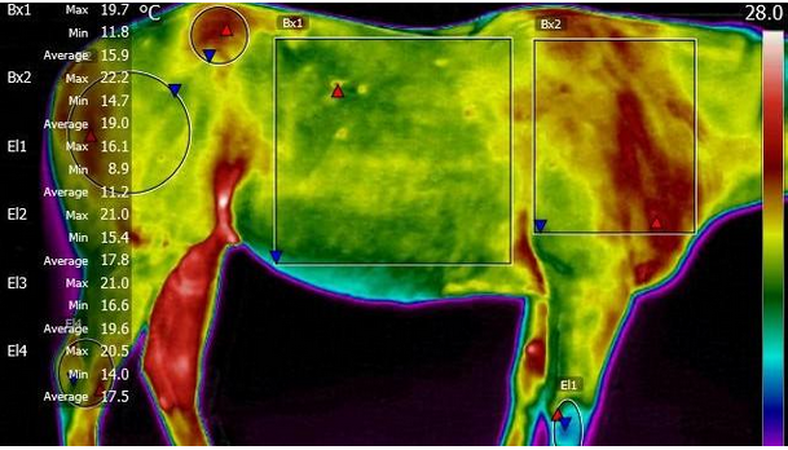Which Alternative Therapies Work
for Horses?
Here's what you need to know about equine chiropractic, acupuncture, and supplements.
I’ve been fortunate to live near large animal veterinarians (DVMs) who also practice alternative treatments, such as chiropractic, acupuncture, and supplements. Over the course of many, many years, I’ve found these techniques and remedies to be very effective.
Chiropractic and Acupuncture
Horse owners report that these techniques work wonders for horses who have sore backs or whose gaits seem to be “off”. And horses seem to love these treatments.
But is there any real evidence that these treatment techniques work, or do we just think they work because of the “placebo effect”? In one study on equine chiropractic, the kinematics (movement measurements) for ten warmbloods were measured at walk and trot at their own preferred speed before, one hour after chiropractic treatment, and and 3 weeks after chiropractic treatment. The results showed that chiropractic manipulations produced significant changes in neck, back, and pelvic movements.
In another study on equine chiropractic, high tech thermographic imaging was performed on a 9-year-old quarter horse gelding before, immediately after, and three weeks after chiropractic adjustment. The results indicated that there was less inflammation in the horse’s joints after chiropractic adjustment, and this reduction in inflammation held after three weeks. (The lead photo above is a thermographic image from this study.)
A number of well-designed scientific studies also indicate that acupuncture can be used to successfully treat chronic pain in horses associated with musculoskeletal problems, such as back injuries, as well as illnesses such as Cushing's disease, lung diseases, laminitis or neuropathies. The University of Illinois Large Veterinary Hospital has now incorporated acupuncture in their treatment program.
Horse owners report that these techniques work wonders for horses who have sore backs or whose gaits seem to be “off”. And horses seem to love these treatments.
But is there any real evidence that these treatment techniques work, or do we just think they work because of the “placebo effect”? In one study on equine chiropractic, the kinematics (movement measurements) for ten warmbloods were measured at walk and trot at their own preferred speed before, one hour after chiropractic treatment, and and 3 weeks after chiropractic treatment. The results showed that chiropractic manipulations produced significant changes in neck, back, and pelvic movements.
In another study on equine chiropractic, high tech thermographic imaging was performed on a 9-year-old quarter horse gelding before, immediately after, and three weeks after chiropractic adjustment. The results indicated that there was less inflammation in the horse’s joints after chiropractic adjustment, and this reduction in inflammation held after three weeks. (The lead photo above is a thermographic image from this study.)
A number of well-designed scientific studies also indicate that acupuncture can be used to successfully treat chronic pain in horses associated with musculoskeletal problems, such as back injuries, as well as illnesses such as Cushing's disease, lung diseases, laminitis or neuropathies. The University of Illinois Large Veterinary Hospital has now incorporated acupuncture in their treatment program.
Horse Supplements
There are a number of supplements that can be used to successfully treat a number of different health issues in horses. I strongly recommend browsing the Smartpak Equine site for information about supplements that may address your horse’s issues. They have a large library of information on equine health and performance, and I’ve always found their customer service representatives to be very knowledgeable. (I have no advertising or other arrangement with Smartpak Equine, so I’m not saying any of this to derive income from sales of their products.)
One supplement for lameness that I swear by is Equinety. It has received rave reviewers from top trainers. Our older mare decided to try to keep up with her younger turnout buddies one day while they were tearing around a large pasture at top speed. When she was brought in to her stall later, she was three-legged lame, avoiding putting weight on her left fore. She was examined by our vet using x-ray and ultrasound, given anti-inflammatory medication, and stall rest. Seven months later, she was still showing lameness on her left fore. I put her on Equinety, and two weeks later, she was much improved. A month later, the lameness was entirely gone. That was almost two years ago, and she is still sound. Unfortunately, Smartpak does not carry Equinety, but you can purchase it at Amazon here.
As long as you’re here, check out these!
How to Recognize Commons Horse Ailments and Diseases
How to Tell Whether Your Horse is Lame
How to Feed and Exercise Your Horse for a Strong Topline
How to Get Stronger to Ride Better
Happy riding!
Copyright Denise Cummins, PhD May 6, 2019; updated May 31, 2024
The Thinking Equestrian
As long as you’re here, check out these!
How to Recognize Commons Horse Ailments and Diseases
How to Tell Whether Your Horse is Lame
How to Feed and Exercise Your Horse for a Strong Topline
How to Get Stronger to Ride Better
Happy riding!
Copyright Denise Cummins, PhD May 6, 2019; updated May 31, 2024
The Thinking Equestrian

